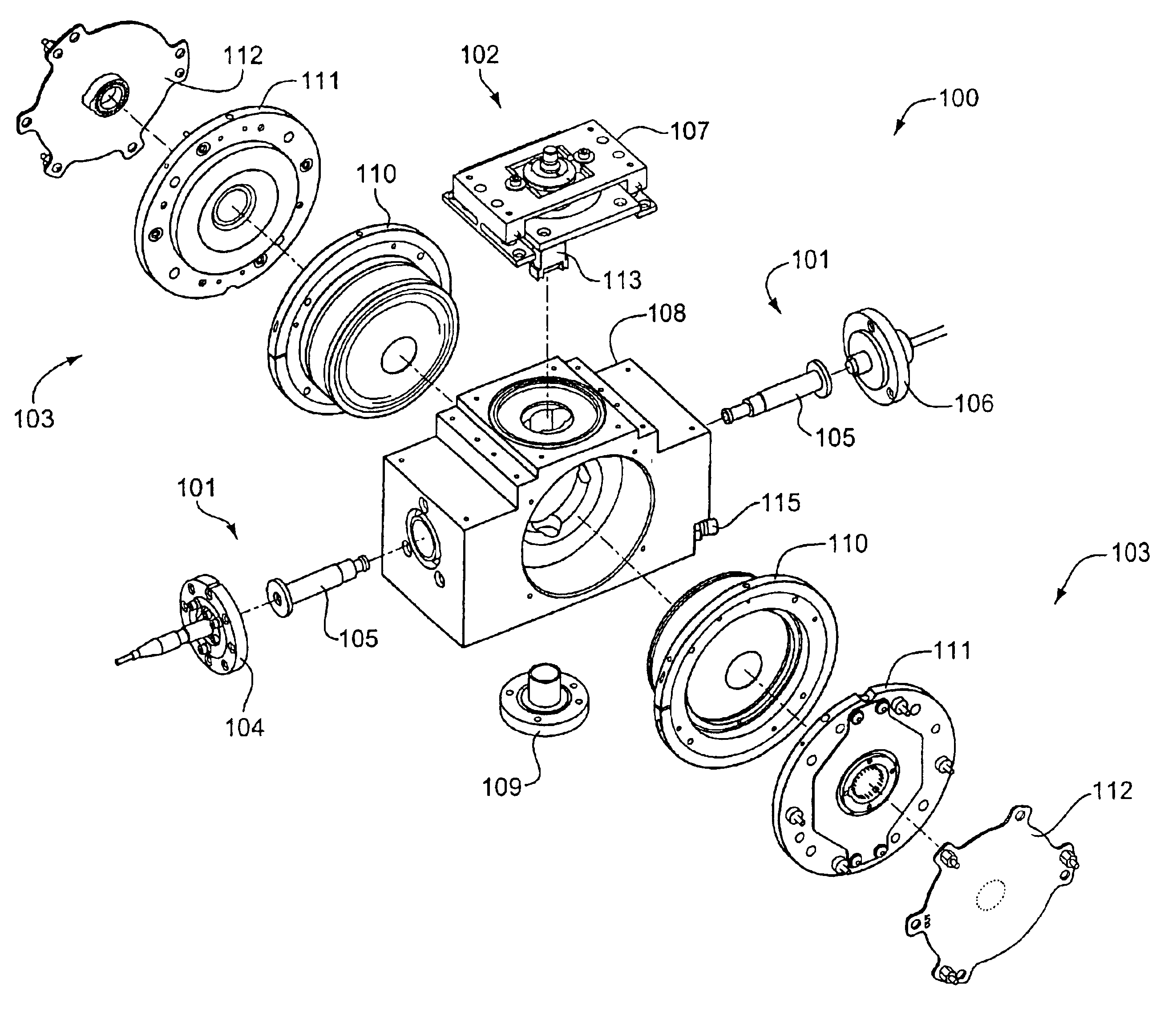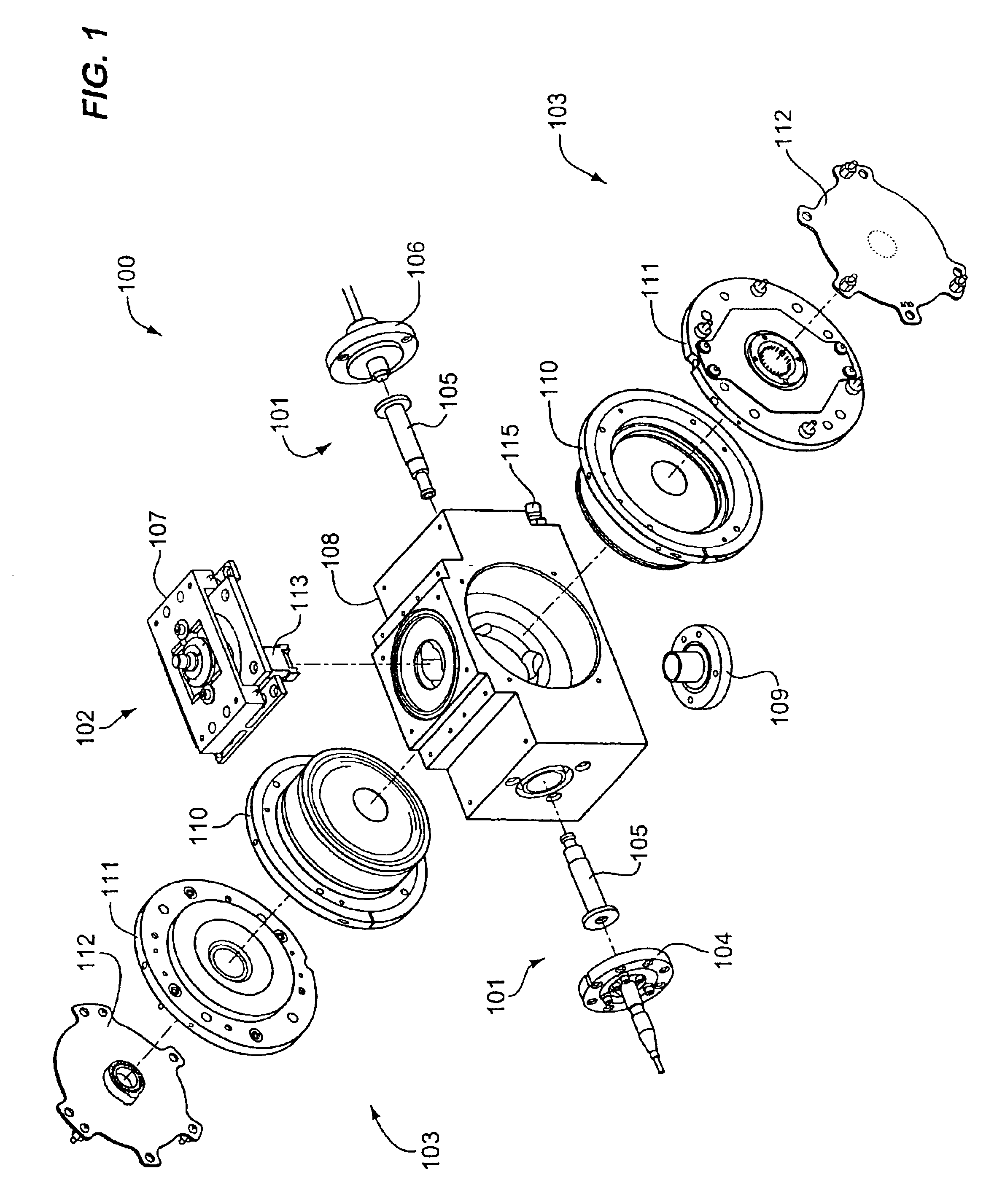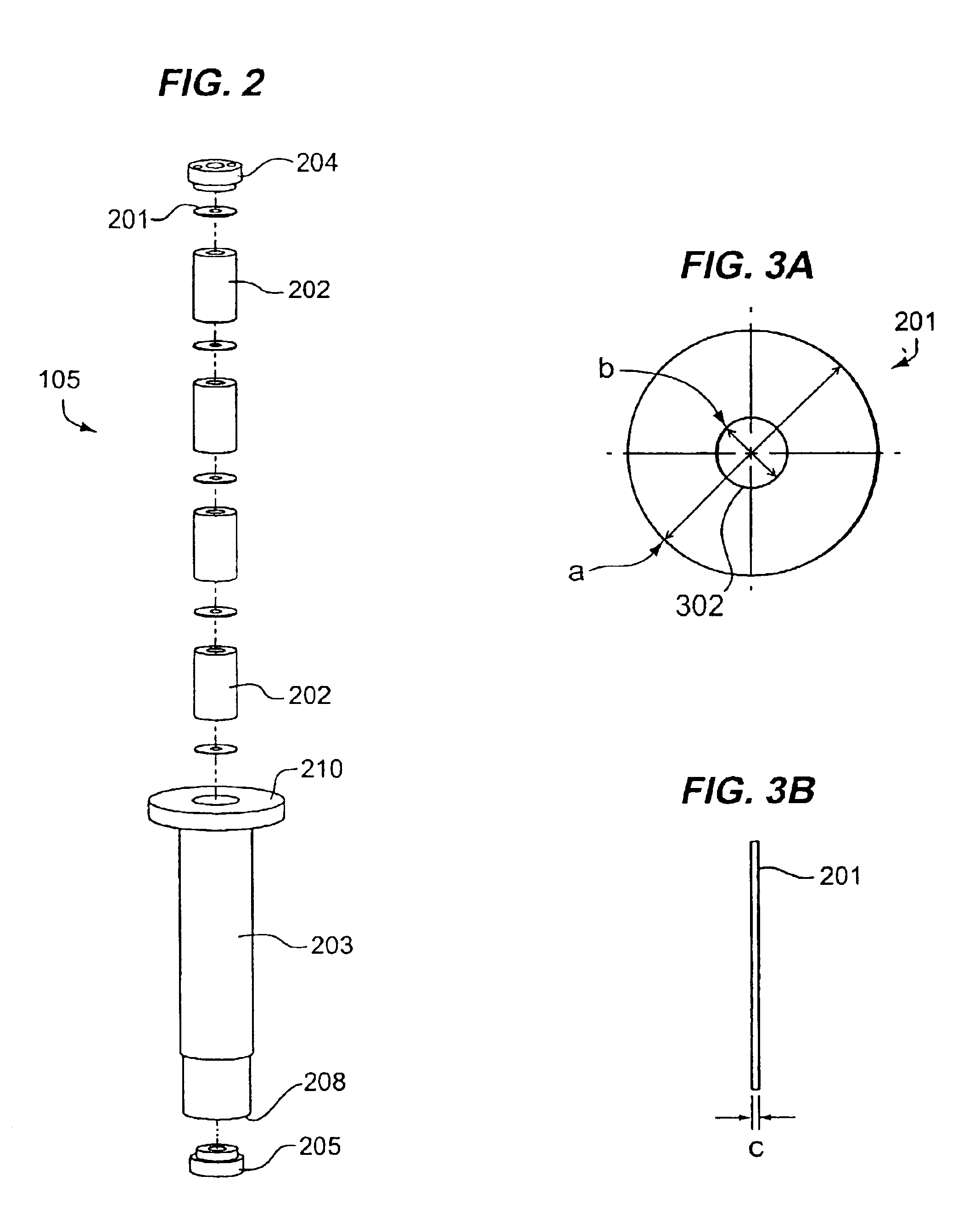Low noise intracavity laser particle counter
- Summary
- Abstract
- Description
- Claims
- Application Information
AI Technical Summary
Benefits of technology
Problems solved by technology
Method used
Image
Examples
Embodiment Construction
[0032]In this disclosure, the term “light” is not limited to visible radiation but is used in a broad sense meaning any electromagnetic radiation. In this disclosure, laser light emerging directly from a laser apparatus is “original laser light”; and laser light reflected by a laser cavity end mirror is “reflected laser light”.
[0033]In this disclosure, an aperture assembly includes one or more physical apertures. An “aperture assembly” is equivalent to “light trap assembly”105 depicted in FIGS. 1, 2, and 4. In this disclosure “aperture,”“physical aperture,” and “aperture plates” are equivalent. In this disclosure, an “optical stop structure” is a structure for preventing diffuse laser light from reaching an orifice for fluid flow, located between this orifice and a source of laser light, or between the orifice and a laser cavity end mirror. A single optical stop structure may include one or more optical stops. A plurality of optical stops may be provided in a single optical stop str...
PUM
 Login to View More
Login to View More Abstract
Description
Claims
Application Information
 Login to View More
Login to View More - R&D
- Intellectual Property
- Life Sciences
- Materials
- Tech Scout
- Unparalleled Data Quality
- Higher Quality Content
- 60% Fewer Hallucinations
Browse by: Latest US Patents, China's latest patents, Technical Efficacy Thesaurus, Application Domain, Technology Topic, Popular Technical Reports.
© 2025 PatSnap. All rights reserved.Legal|Privacy policy|Modern Slavery Act Transparency Statement|Sitemap|About US| Contact US: help@patsnap.com



